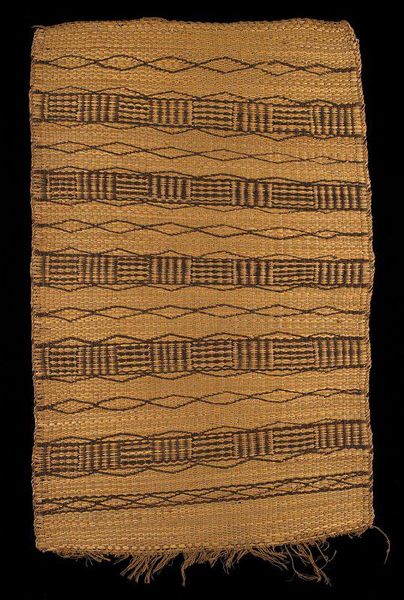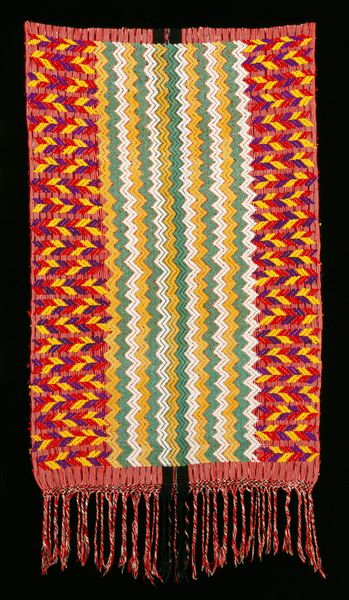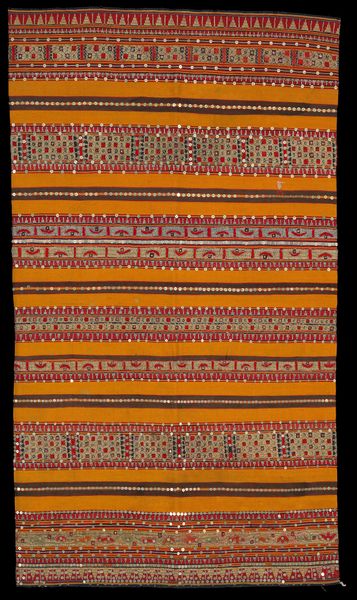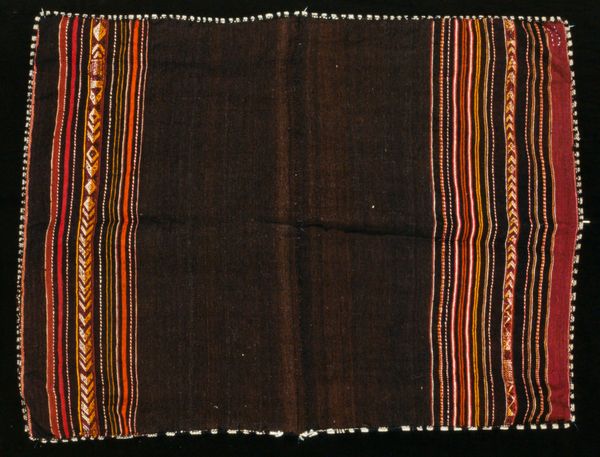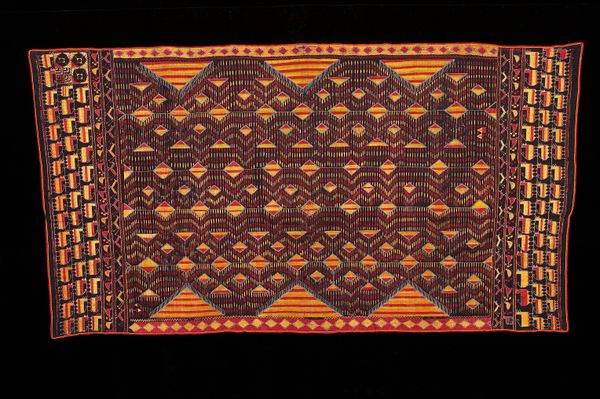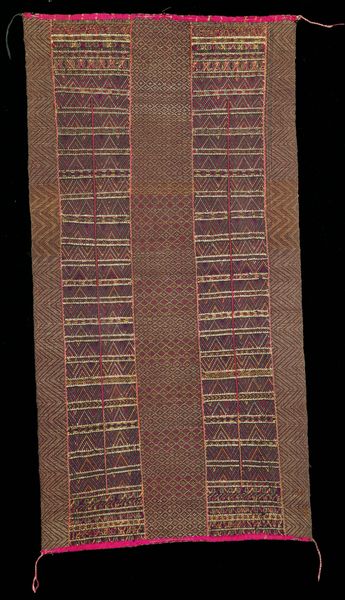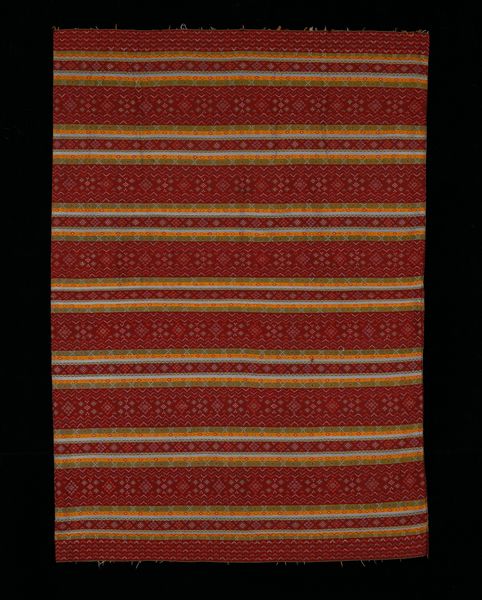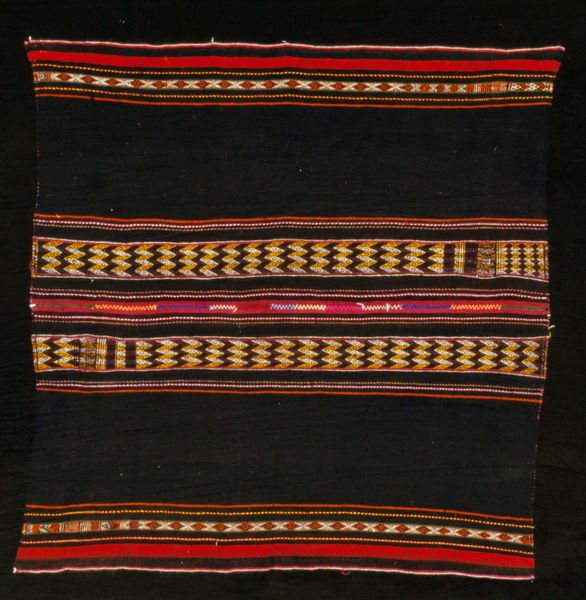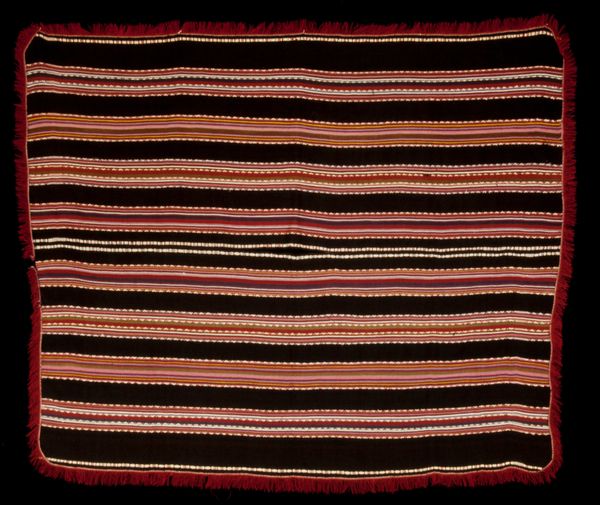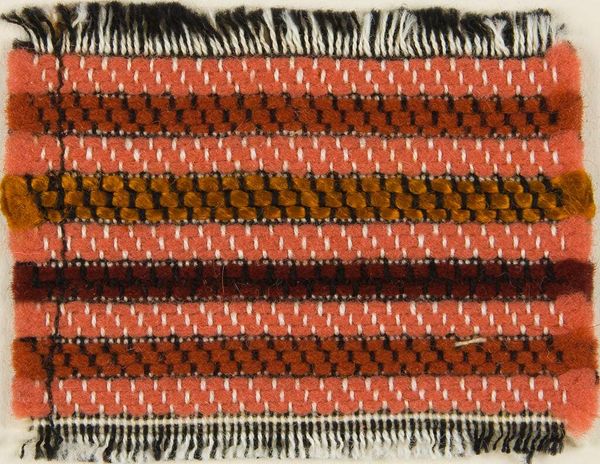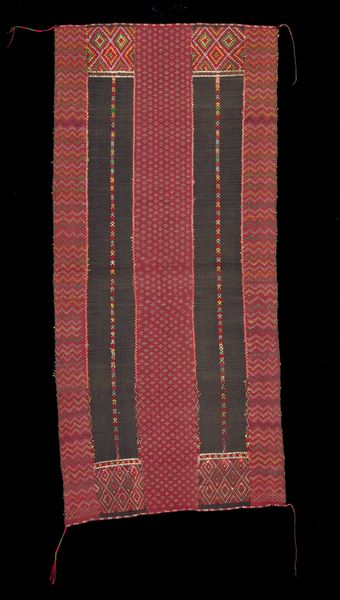
weaving, textile
#
weaving
#
textile
#
abstract
#
geometric pattern
#
abstract pattern
#
organic pattern
#
geometric
Dimensions: 87 9/16 x 42 1/4 in. (222.41 x 107.32 cm)
Copyright: No Known Copyright
Curator: Immediately, I am drawn to the warmth, it is earthy. Is this, dare I say, cozy abstraction? Editor: Yes, that’s a wonderfully intuitive reaction to this textile, Beda Partridge’s "Mat," crafted around 1930. A beautiful example of weaving currently housed at the Minneapolis Institute of Art. Let’s delve a bit deeper into its structure. Curator: The repetition speaks to me first—a rhythmic echoing of lines, dark slashes against softer, sandy hues. I feel like I’m seeing echos within echos of a conversation with the loom. Editor: Precisely. Note the artist's use of geometric abstraction, where she explores a vocabulary of repeated motifs. The alternating bands of zigzags and abstracted foliate forms create an elegant interplay of positive and negative space, doesn’t it? Curator: Very much. There’s a tension between the rigidity of the geometry and the very handmade nature of the weave that breathes such character into it. Each slight imperfection makes it all the more real. And I think there's an appeal to find shapes within its depths that speak back to that weaving conversation. Editor: Indeed, the material’s inherent qualities guide the abstraction—we can see the interplay of technique and intent at every crossing point. It really embodies an approach informed by both rational design and material awareness. Curator: It speaks of being so tactile, so sensuous and inviting, despite the careful patterns… it urges the viewer, no matter how formal or informal, to remember that there are so many types of patterns that inform who we are. What a conversation we must weave ourselves! Editor: I concur wholeheartedly, finding harmony where others expect contrast allows us, even encourages us, to expand our definitions. The piece speaks softly, but carries so much depth within the gentle push-pull. Curator: That is wonderful. To remember the simple power of reevaluation within every act. Editor: Absolutely. A truly rewarding work—that, perhaps surprisingly—encourages multiple returns for closer viewings and thoughts.
Comments
minneapolisinstituteofart about 2 years ago
⋮
Many tribes in the Great Lakes/Woodlands region created woven mats. Mainly used as delicately decorated floor coverings, mats were created by women; a tradition that was transferred from generation to generation. The designs on this mat are reminiscent of leaves that are found in Anishinabe woven beadwork.
Join the conversation
Join millions of artists and users on Artera today and experience the ultimate creative platform.
